Macroeconomic Policies Money and Monetary Policy NADZIRAH ZAINORDIN

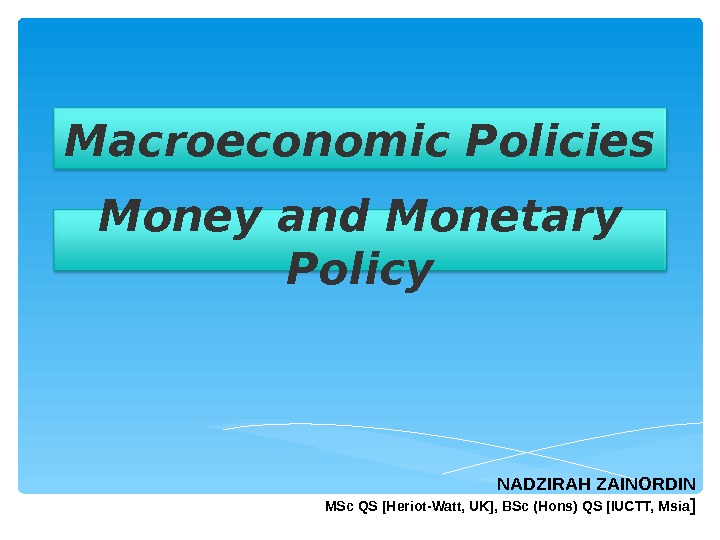
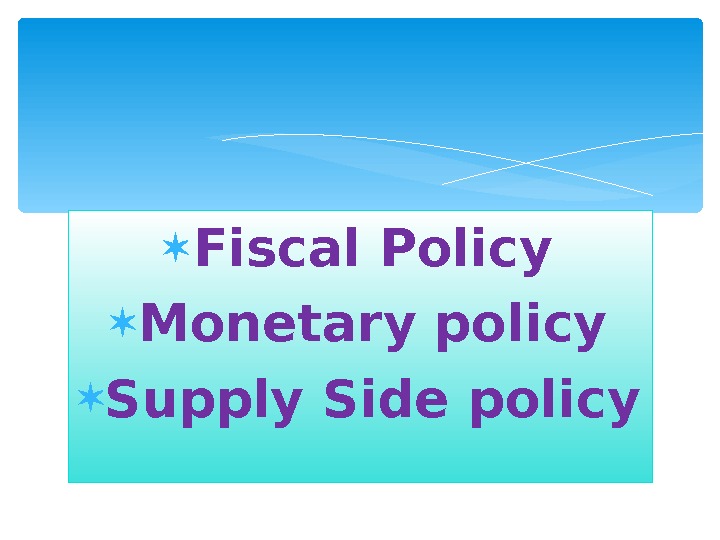
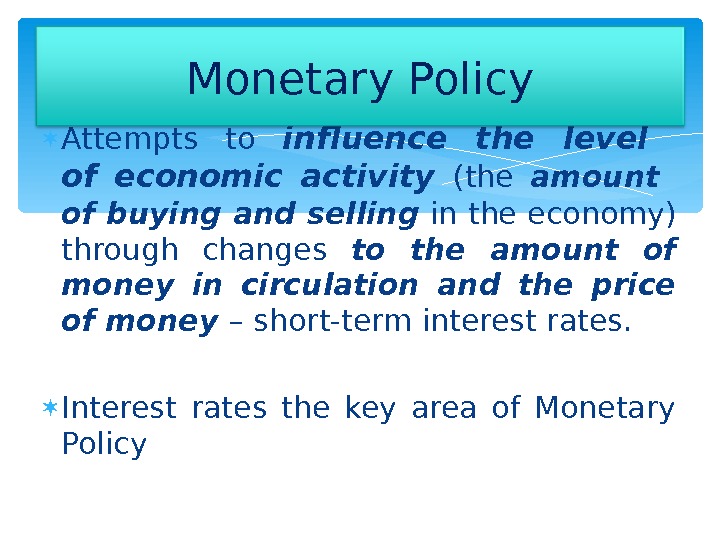
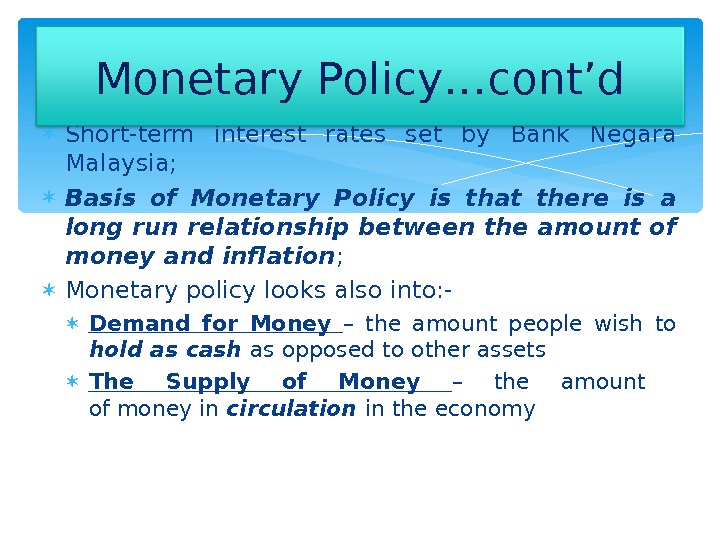
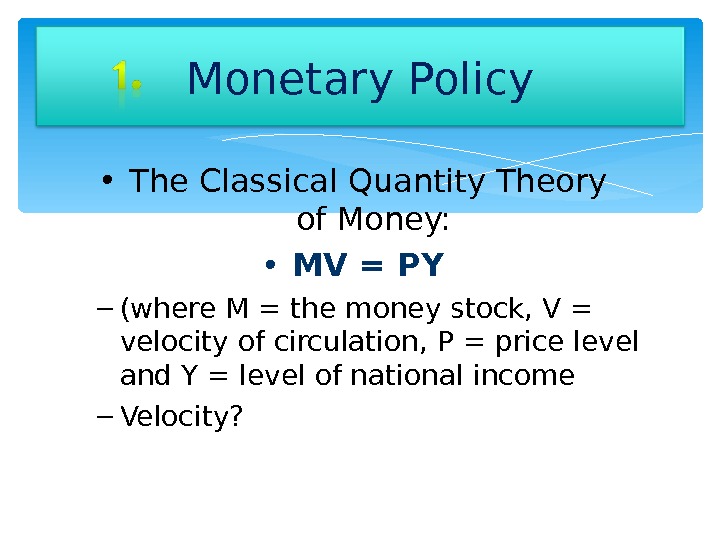
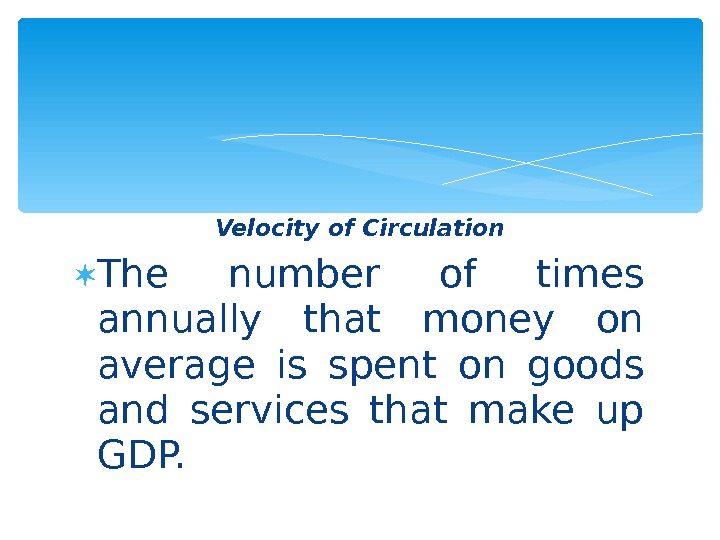
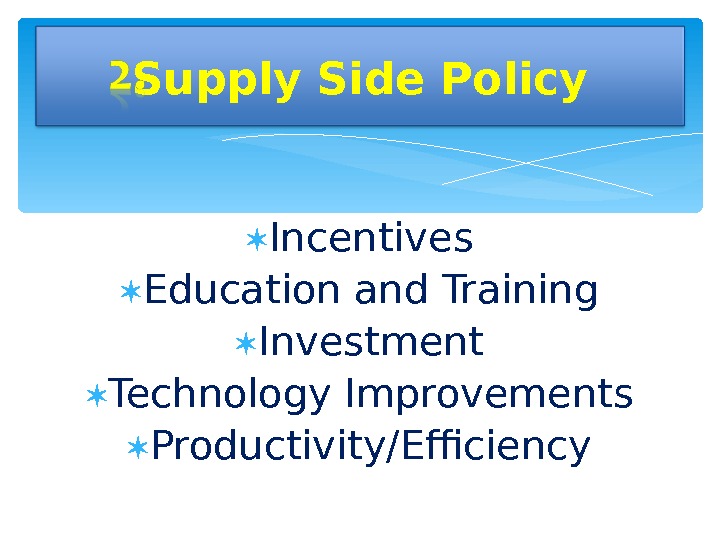
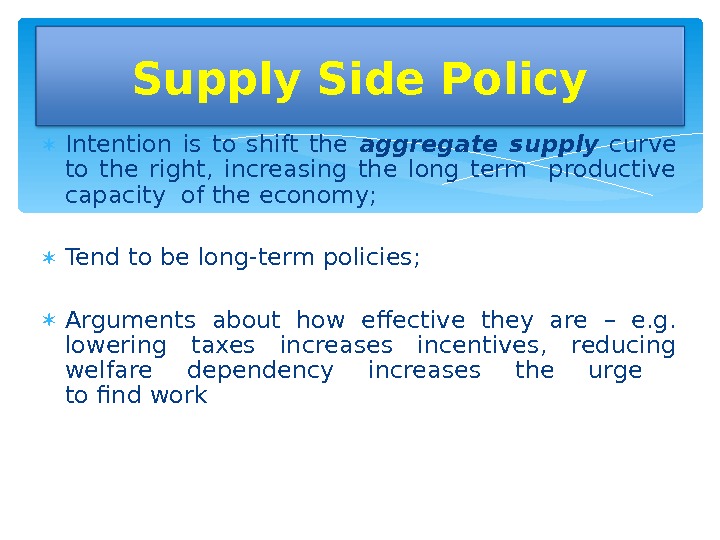
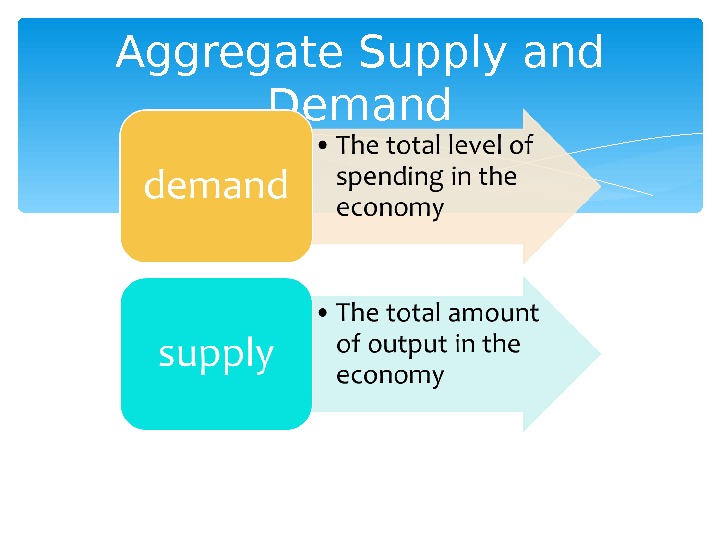
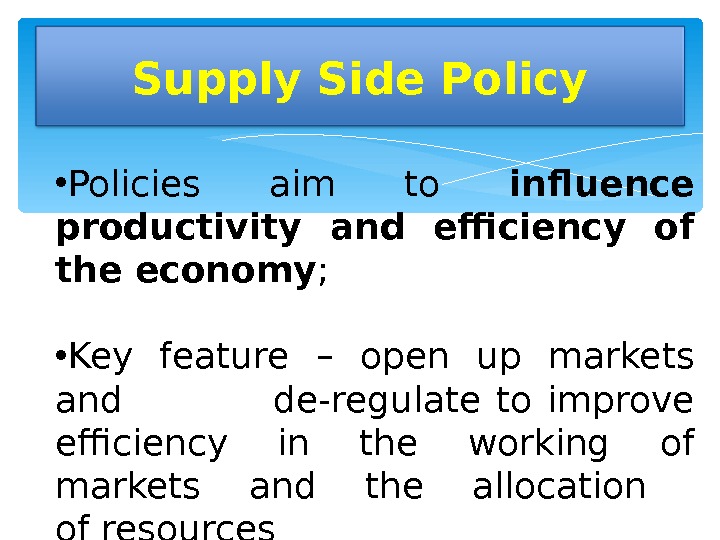
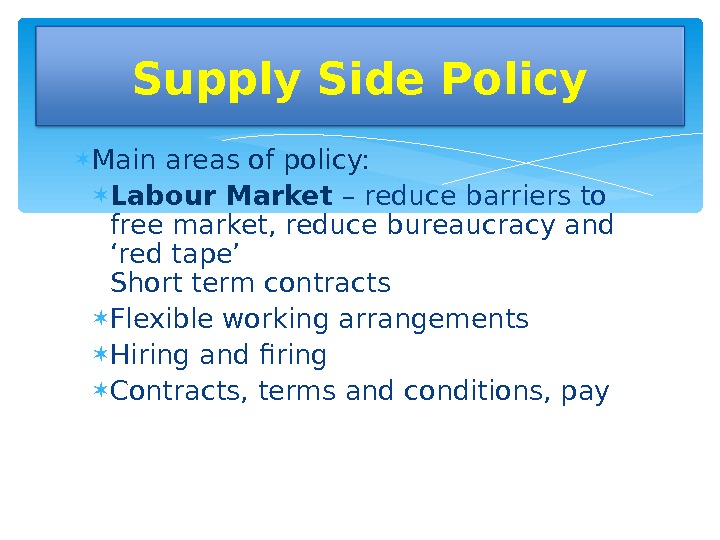
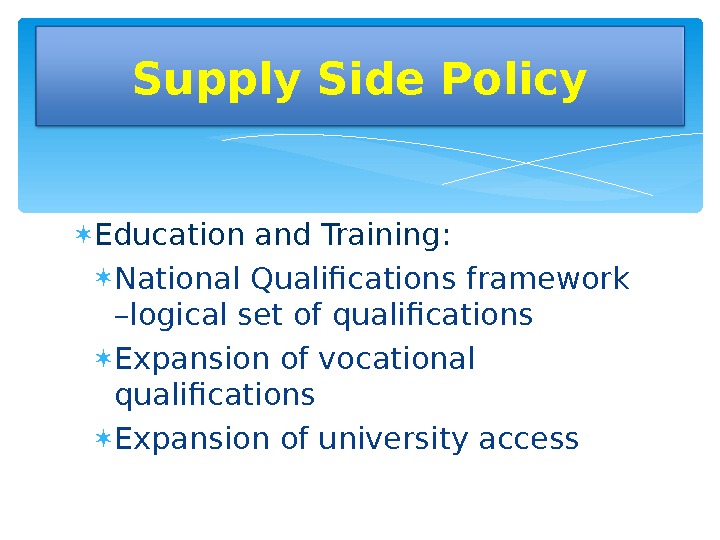
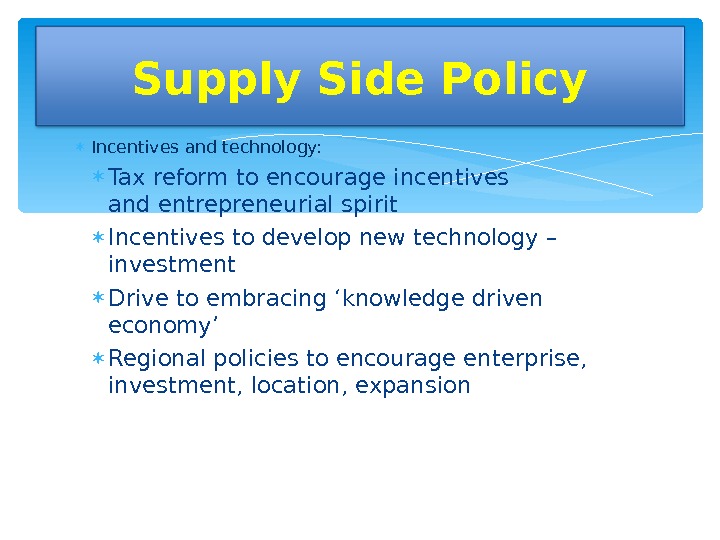

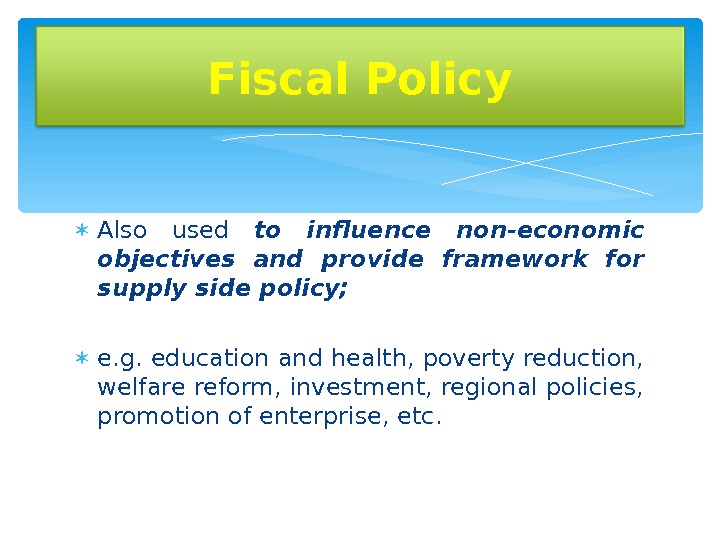
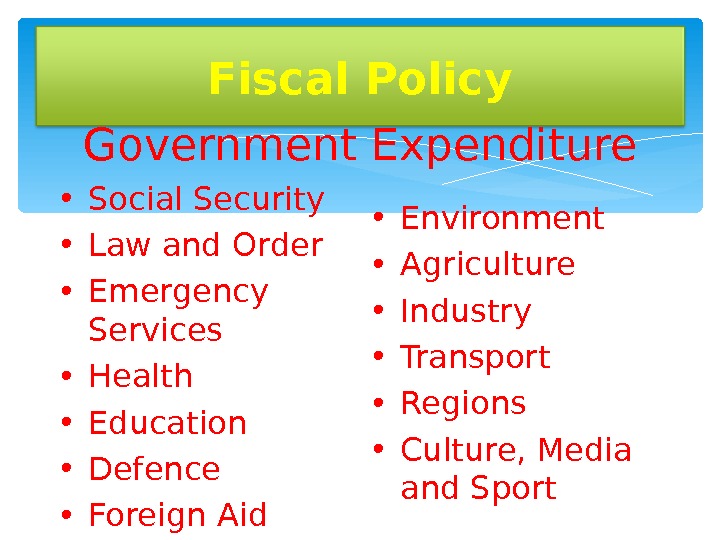
lect_7_-_money_amp_monetary_policy.ppt
- Размер: 1.1 Mегабайта
- Количество слайдов: 16
Описание презентации Macroeconomic Policies Money and Monetary Policy NADZIRAH ZAINORDIN по слайдам
![Macroeconomic Policies Money and Monetary Policy NADZIRAH ZAINORDIN MSc QS [Heriot-Watt, UK], BSc (Hons) QS [IUCTT, Macroeconomic Policies Money and Monetary Policy NADZIRAH ZAINORDIN MSc QS [Heriot-Watt, UK], BSc (Hons) QS [IUCTT,](/docs//lect_7_-_money_amp_monetary_policy_images/lect_7_-_money_amp_monetary_policy_0.jpg) Macroeconomic Policies Money and Monetary Policy NADZIRAH ZAINORDIN MSc QS [Heriot-Watt, UK], BSc (Hons) QS [IUCTT, Msia ]
Macroeconomic Policies Money and Monetary Policy NADZIRAH ZAINORDIN MSc QS [Heriot-Watt, UK], BSc (Hons) QS [IUCTT, Msia ]
 Fiscal Policy Monetary policy Supply Side policy
Fiscal Policy Monetary policy Supply Side policy
 Attempts to influence the level of economic activity (the amount of buying and selling in the economy) through changes to the amount of money in circulation and the price of money – short-term interest rates. Interest rates the key area of Monetary Policy
Attempts to influence the level of economic activity (the amount of buying and selling in the economy) through changes to the amount of money in circulation and the price of money – short-term interest rates. Interest rates the key area of Monetary Policy
 Short-term interest rates set by Bank Negara Malaysia; Basis of Monetary Policy is that there is a long run relationship between the amount of money and inflation ; Monetary policy looks also into: — Demand for Money – the amount people wish to hold as cash as opposed to other assets The Supply of Money – the amount of money in circulation in the economy. Monetary Policy…cont’d
Short-term interest rates set by Bank Negara Malaysia; Basis of Monetary Policy is that there is a long run relationship between the amount of money and inflation ; Monetary policy looks also into: — Demand for Money – the amount people wish to hold as cash as opposed to other assets The Supply of Money – the amount of money in circulation in the economy. Monetary Policy…cont’d
 Monetary Policy • The Classical Quantity Theory of Money: • MV = PY – (where M = the money stock, V = velocity of circulation, P = price level and Y = level of national income – Velocity?
Monetary Policy • The Classical Quantity Theory of Money: • MV = PY – (where M = the money stock, V = velocity of circulation, P = price level and Y = level of national income – Velocity?
 Velocity of Circulation The number of times annually that money on average is spent on goods and services that make up GDP.
Velocity of Circulation The number of times annually that money on average is spent on goods and services that make up GDP.
 Incentives Education and Training Investment Technology Improvements Productivity/Efficiency. Supply Side Policy
Incentives Education and Training Investment Technology Improvements Productivity/Efficiency. Supply Side Policy
 Intention is to shift the aggregate supply curve to the right, increasing the long term productive capacity of the economy; Tend to be long-term policies; Arguments about how effective they are – e. g. lowering taxes increases incentives, reducing welfare dependency increases the urge to find work Supply Side Policy
Intention is to shift the aggregate supply curve to the right, increasing the long term productive capacity of the economy; Tend to be long-term policies; Arguments about how effective they are – e. g. lowering taxes increases incentives, reducing welfare dependency increases the urge to find work Supply Side Policy
 Aggregate Supply and Demand
Aggregate Supply and Demand
 Supply Side Policy • Policies aim to influence productivity and efficiency of the economy ; • Key feature – open up markets and de-regulate to improve efficiency in the working of markets and the allocation of resources
Supply Side Policy • Policies aim to influence productivity and efficiency of the economy ; • Key feature – open up markets and de-regulate to improve efficiency in the working of markets and the allocation of resources
 Main areas of policy: Labour Market – reduce barriers to free market, reduce bureaucracy and ‘red tape’ Short term contracts Flexible working arrangements Hiring and firing Contracts, terms and conditions, pay Supply Side Policy
Main areas of policy: Labour Market – reduce barriers to free market, reduce bureaucracy and ‘red tape’ Short term contracts Flexible working arrangements Hiring and firing Contracts, terms and conditions, pay Supply Side Policy
 Education and Training: National Qualifications framework –logical set of qualifications Expansion of vocational qualifications Expansion of university access Supply Side Policy
Education and Training: National Qualifications framework –logical set of qualifications Expansion of vocational qualifications Expansion of university access Supply Side Policy
 Incentives and technology: Tax reform to encourage incentives and entrepreneurial spirit Incentives to develop new technology – investment Drive to embracing ‘knowledge driven economy’ Regional policies to encourage enterprise, investment, location, expansion Supply Side Policy
Incentives and technology: Tax reform to encourage incentives and entrepreneurial spirit Incentives to develop new technology – investment Drive to embracing ‘knowledge driven economy’ Regional policies to encourage enterprise, investment, location, expansion Supply Side Policy
 Influencing the level of economic activity though manipulation of government income and expenditure Influence Aggregate Demand – Tax regime influences consumption (C) and investment (I) Government Spending (G) Influences key economic objectives Acts as an ‘automatic stabiliser’ B UT: Fiscal Policy
Influencing the level of economic activity though manipulation of government income and expenditure Influence Aggregate Demand – Tax regime influences consumption (C) and investment (I) Government Spending (G) Influences key economic objectives Acts as an ‘automatic stabiliser’ B UT: Fiscal Policy
 Also used to influence non-economic objectives and provide framework for supply side policy; e. g. education and health, poverty reduction, welfare reform, investment, regional policies, promotion of enterprise, etc. Fiscal Policy
Also used to influence non-economic objectives and provide framework for supply side policy; e. g. education and health, poverty reduction, welfare reform, investment, regional policies, promotion of enterprise, etc. Fiscal Policy
 Fiscal Policy Government Expenditure • Social Security • Law and Order • Emergency Services • Health • Education • Defence • Foreign Aid • Environment • Agriculture • Industry • Transport • Regions • Culture, Media and Sport
Fiscal Policy Government Expenditure • Social Security • Law and Order • Emergency Services • Health • Education • Defence • Foreign Aid • Environment • Agriculture • Industry • Transport • Regions • Culture, Media and Sport

